- Home
- Arthur C. Clarke
2001: A Space Odyssey (Arthur C. Clarke Collection: The Odyssey) Page 16
2001: A Space Odyssey (Arthur C. Clarke Collection: The Odyssey) Read online
Page 16
“Finally—your specific target. It seems incredible that advanced forms of life can exist on Saturn, or could ever have evolved on any of its moons. We had planned to survey the entire system, and we still hope that you can carry out a simplified program. But now we may have to concentrate on the eighth satellite—Japetus. When the time comes for the terminal maneuver, we will decide whether you should rendezvous with this remarkable object.
“Japetus is unique in the Solar System—you know this already, of course, but like all the astronomers of the last three hundred years, you’ve probably given it little thought. So let me remind you that Cassini—who discovered Japetus in 1671—also observed that it was six times brighter on one side of its orbit than the other.
“This is an extraordinary ratio, and there has never been a satisfactory explanation for it. Japetus is so small—about eight hundred miles in diameter—that even in the lunar telescopes its disk is barely visible. But there seems to be a brilliant, curiously symmetrical spot on one face, and this may be connected with TMA-1. I sometimes think that Japetus has been flashing at us like a cosmic heliograph for three hundred years, and we’ve been too stupid to understand its message….
“So now you know your real objective, and can appreciate the vital importance of this mission. We are all praying that you can still provide us with some facts for a preliminary announcement; the secret cannot be kept indefinitely.
“At the moment, we do not know whether to hope or fear. We do not know if, out on the moons of Saturn, you will meet with good or with evil—or only with ruins a thousand times older than Troy.”
PART FIVE
THE MOONS OF SATURN
CHAPTER 31
Survival
Work is the best remedy for any shock, and Bowman now had work enough for all his lost crewmates. As swiftly as possible, starting with the vital systems without which he and the ship would die, he had to get Discovery fully operational again.
Life support was the first priority. Much oxygen had been lost, but the reserves were still ample to sustain a single man. The pressure and temperature regulation was largely automatic, and there had seldom been need for Hal to interfere with it. The monitors on Earth could now carry out many of the higher duties of the slain computer, despite the long time lag before they could react to changing situations. Any trouble in the life-support system—short of a serious puncture in the hull—would take hours to make itself apparent; there would be plenty of warning.
The ship’s power, navigation, and propulsion systems were unaffected—but the last two, in any event, Bowman would not need for months, until it was time to rendezvous with Saturn. Even at long range, without the help of an onboard computer, Earth could still supervise this operation. The final orbit adjustments would be somewhat tedious, because of the constant need for checking, but this was no serious problem.
By far the worst job had been emptying the spinning coffins in the centrifuge. It was well, Bowman thought thankfully, that the members of the survey team had been colleagues, but not intimate friends. They had trained together for only a few weeks; looking back on it, he now realized that even this had been largely a compatibility test.
When he had finally sealed the empty hibernacula, he felt rather like an Egyptian tomb robber. Now Kaminski, Whitehead, and Hunter would all reach Saturn before him—but not before Frank Poole. Somehow, he derived a strange, wry satisfaction from this thought.
He did not attempt to find if the rest of the hibernation system was still in working order. Though his life might ultimately depend upon it, this was a problem that could wait until the ship had entered its final orbit. Many things might happen before then.
It was even possible—though he had not yet looked into the supply position carefully—that by rigorous rationing he might remain alive, without resort to hibernation, until rescue came. But whether he could survive psychologically as well as physically was quite another matter.
He tried to avoid thinking about such long-range problems, and to concentrate on immediate essentials. Slowly, he cleaned up the ship, checked that its systems were still running smoothly, discussed technical difficulties with Earth, and operated on the minimum of sleep. Only at intervals, during the first weeks, was he able to give much thought to the great mystery toward which he was now inexorably racing—though it was never very far from his mind.
At last, as the ship slowly settled down once more into an automatic routine—though one that still demanded his constant supervision—Bowman had time to study the reports and briefings sent to him from Earth. Again and again he played back the recording made when TMA-1 greeted the dawn for the first time in three million years. He watched the spacesuited figures moving around it, and almost smiled at their ludicrous panic when it blasted its signal at the stars, paralyzing their radios with the sheer power of its electronic voice.
Since that moment, the black slab had done nothing. It had been covered up, then cautiously exposed to the Sun again—without any reaction. No attempt had been made to cut into it, partly through scientific caution, but equally through fear of the possible consequences.
The magnetic field that led to its discovery had vanished at the moment of that radio shriek. Perhaps, some experts theorized, it had been generated by a tremendous circulating current, flowing in a superconductor and thus carrying energy down the ages until it was needed. That the monolith had some internal source of power seemed certain; the solar energy it had absorbed during its brief exposure could not account for the strength of its signal.
One curious, and perhaps quite unimportant, feature of the block had led to endless argument. The monolith was 11 feet high, and 1 1/4 by 5 feet in cross-section. When its dimensions were checked with great care, they were found to be in the exact ratio 1 to 4 to 9—the squares of the first three integers. No one could suggest any plausible explanation for this, but it could hardly be a coincidence, for the proportions held to the limits of measurable accuracy. It was a chastening thought that the entire technology of Earth could not shape even an inert block, of any material, with such a fantastic degree of precision. In its way, this passive yet almost arrogant display of geometrical perfection was as impressive as any of TMA-1’s other attributes.
Bowman also listened, with a curiously detached interest, to Mission Control’s belated apologia for its programming. The voices from Earth seemed to have a defensive note; he could imagine the recriminations that must now be in progress among those who had planned the expedition.
They had some good arguments, of course—including the results of a secret Department of Defense study, Project BARSOOM, which had been carried out by Harvard’s School of Psychology in 1989. In this experiment in controlled sociology, various sample populations had been assured that the human race had made contact with extraterrestrials. Many of the subjects tested were—with the help of drugs, hypnosis, and visual effects—under the impression that they had actually met creatures from other planets, so their reactions were regarded as authentic.
Some of these reactions had been quite violent; there was, it seemed, a deep vein of xenophobia in many otherwise normal human beings. In view of mankind’s record of lynchings, pogroms, and similar pleasantries, this should have surprised no one; nevertheless, the organizers of the study had been deeply disturbed, and the results had never been released. The five separate panics caused in the twentieth century by radio broadcasts of H. G. Wells’s War of the Worlds also reinforced the study’s conclusions….
Despite these arguments, Bowman sometimes wondered if the cultural shock danger was the only explanation for the mission’s extreme secrecy. Some hints that had been dropped during his briefings suggested that the U.S.-U.S.S.R. bloc hoped to derive advantage by being the first to contact intelligent extraterrestrials. From his present viewpoint, looking back on Earth as a dim star almost lost in the Sun, such considerations now seemed ludicrously parochial.
He was rather more interested—even though this was no
w very much water under the bridge—in the theory put forward to account for Hal’s behavior. No one would ever be sure of the truth, but the fact that one of the Mission Control 9000s had been driven into an identical psychosis, and was now under deep therapy, suggested that the explanation was the correct one. The same mistake would not be made again; and the fact that Hal’s builders had failed fully to understand the psychology of their own creation showed how difficult it might be to establish communication with truly alien beings.
Bowman could easily believe Dr. Simonson’s theory that unconscious feelings of guilt, caused by his program conflicts, had made Hal attempt to break the circuit with Earth. And he liked to think—though this again was something that could never be proved—that Hal had no intention of killing Poole. He had merely tried to destroy the evidence; for once the AE-35 unit reported as burned out was proved to be operational, his lie would be revealed. After that, like any clumsy criminal caught in a thickening web of deception, he had panicked.
And panic was something that Bowman understood better than he had any wish to, for he had known it twice during his life. The first time was as a boy, when he had been caught in a line of surf and nearly drowned; the second was as a space-man under training, when a faulty gauge had convinced him that his oxygen would be exhausted before he could reach safety.
On both occasions, he had almost lost control of all his higher logical processes; he had been within seconds of becoming a frenzied bundle of random impulses. Both times he had won through, but he knew well enough that any man, in the right circumstances, could be dehumanized by panic.
If it could happen to a man, then it could happen to Hal; and with that knowledge the bitterness and the sense of betrayal he felt toward the computer began to fade. Now, in any event, it belonged to a past that was wholly overshadowed by the threat, and the promise, of the unknown future.
CHAPTER 32
Concerning E.T.’s
Apart from hasty meals back in the carrousel—luckily the main food dispensers had not been damaged—Bowman practically lived on the control deck. He catnapped in his seat, and so could spot any trouble as soon as the first signs of it appeared on the display. Under instructions from Mission Control, he had jury-rigged several emergency systems, which were working tolerably well. It even seemed possible that he would survive until the Discovery reached Saturn—which, of course, she would do whether he was alive or not.
Though he had little enough time for sightseeing, and the sky of space was no novelty to him, the knowledge of what now lay out there beyond the observation ports sometimes made it difficult for him to concentrate even on the problem of survival. Dead ahead, as the ship was now oriented, sprawled the Milky Way, with its clouds of stars so tightly packed that they numbed the mind. There were the fiery mists of Sagittarius, those seething swarms of suns that forever hid the heart of the galaxy from human vision. There was the ominous black shadow of the Coal Sack, that hole in space where no stars shone. And there was Alpha Centauri, nearest of all alien suns—the first stop beyond the Solar System.
Although outshone by Sirius and Canopus, it was Alpha Centauri that drew Bowman’s eyes and mind whenever he looked out into space. For that unwavering point of brightness, whose rays had taken four years to reach him, had come to symbolize the secret debates that now raged on Earth, and whose echoes came to him from time to time.
No one doubted that there must be some connection between TMA-1 and the Saturnian system, but hardly any scientists would admit that the creatures who had erected the monolith could possibly have originated there. As an abode of life, Saturn was even more hostile than Jupiter, and its many moons were frozen in an eternal winter three hundred degrees below zero. Only one of them—Titan—possessed an atmosphere; and that was a thin envelope of poisonous methane.
So perhaps the creatures who had visited Earth’s Moon so long ago were not merely extraterrestrial, but extrasolar—visitors from the stars, who had established their bases wherever it suited them. And this at once raised another problem: could any technology, no matter how advanced, bridge the awful gulf that lay between the Solar System and the nearest alien sun?
Many scientists flatly denied the possibility. They pointed out that Discovery, the fastest ship ever designed, would take twenty thousand years to reach Alpha Centauri—and millions of years to travel any appreciable distance across the galaxy. Even if, during the centuries to come, propulsion systems improved out of all recognition, in the end they would meet the impassable barrier of the speed of light, which no material object could exceed. Therefore, the builders of TMA-1 must have shared the same sun as Man; and since they had made no appearance in historic times, they were probably extinct.
A vocal minority refused to agree. Even if it took centuries to travel from star to star, they contended, this might be no obstacle to sufficiently determined explorers. The technique of hibernation, used on Discovery herself, was one possible answer. Another was the self-contained artificial world, embarking on voyages that might last for many generations.
In any event, why should one assume that all intelligent species were as short-lived as Man? There might be creatures in the universe to whom a thousand-year voyage would present nothing worse than slight boredom….
These arguments, theoretical though they were, concerned a matter of the utmost practical importance; they involved the concept of “reaction time.” If TMA-1 had indeed sent a signal to the stars—perhaps with the help of some further device near Saturn—then it would not reach its destination for years. Even if the response was immediate, therefore, humanity would have a breathing space which could certainly be measured in decades—more probably in centuries. To many people, this was a reassuring thought.
But not to all. A few scientists—most of them beachcombers on the wilder shores of theoretical physics—asked the disturbing question: “Are we certain that the speed of light is an unbreakable barrier?” It was true that the Special Theory of Relativity had proved to be remarkably durable, and would soon be approaching its first centenary; but it had begun to show a few cracks. And even if Einstein could not be defied, he might be evaded.
Those who sponsored this view talked hopefully about shortcuts through higher dimensions, lines that were straighter than straight, and hyperspacial connectivity. They were fond of using an expressive phrase coined by a Princeton mathematician of the last century: “Wormholes in space.” Critics who suggested that these ideas were too fantastic to be taken seriously were reminded of Niels Bohr’s “Your theory is crazy—but not crazy enough to be true.”
If there was disputation among the physicists, it was nothing compared with that among the biologists, when they discussed the hoary old problem: “What would intelligent extraterrestrials look like?” They divided themselves into two opposing camps—one arguing that such creatures must be humanoid, the other equally convinced that “they” would look nothing like men.
Settling for the first answer were those who believed that the design of two legs, two arms, and main sense organs at the highest point, was so basic and so sensible that it was hard to think of a better one. Of course, there would be minor differences like six fingers instead of five, oddly colored skin or hair, and peculiar facial arrangements; but most intelligent extraterrestrials—usually abbreviated to E.T.’s—would be so similar to Man that they might not be glanced at twice in poor lighting, or from a distance.
This anthropomorphic thinking was ridiculed by another group of biologists, true products of the Space Age who felt themselves free from the prejudices of the past. They pointed out that the human body was the result of millions of evolutionary choices, made by chance over eons of time. At any one of these countless moments of decision, the genetic dice might have fallen differently, perhaps with better results. For the human body was a bizarre piece of improvisation, full of organs that had been diverted from one function to another, not always very successfully—and even containing discarded items, like the appendi
x, that were now worse than useless.
There were other thinkers, Bowman also found, who held even more exotic views. They did not believe that really advanced beings would possess organic bodies at all. Sooner or later, as their scientific knowledge progressed, they would get rid of the fragile, disease-and-accident-prone homes that Nature had given them, and which doomed them to inevitable death. They would replace their natural bodies as they wore out—or perhaps even before that—by constructions of metal and plastic, and would thus achieve immortality. The brain might linger for a little while as the last remnant of the organic body, directing its mechanical limbs and observing the universe through its electronic senses—senses far finer and subtler than those that blind evolution could ever develop.
Even on Earth, the first steps in this direction had been taken. There were millions of men, doomed in earlier ages, who now lived active and happy lives thanks to artificial limbs, kidneys, lungs, and hearts. To this process there could be only one conclusion—however far off it might be.
And eventually even the brain might go. As the seat of consciousness, it was not essential; the development of electronic intelligence had proved that. The conflict between mind and machine might be resolved at last in the eternal truce of complete symbiosis….
But was even this the end? A few mystically inclined biologists went still further. They speculated, taking their cues from the beliefs of many religions, that mind would eventually free itself from matter. The robot body, like the flesh-and-blood one, would be no more than a stepping-stone to something which, long ago, men had called “spirit.”
And if there was anything beyond that, its name could only be God.

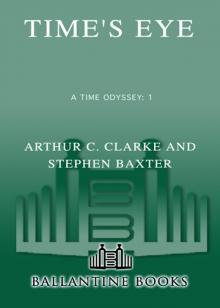 Time's Eye
Time's Eye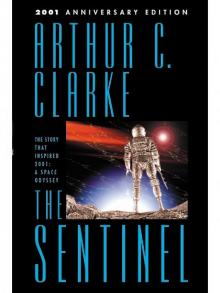 The Sentinel
The Sentinel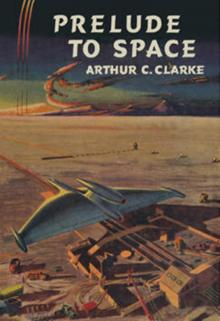 Prelude to Space
Prelude to Space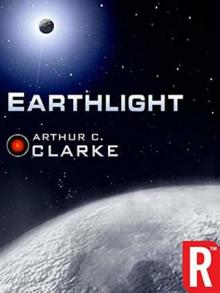 Earthlight (Arthur C. Clarke Collection)
Earthlight (Arthur C. Clarke Collection) 2001: A Space Odyssey
2001: A Space Odyssey Against the Fall of Night
Against the Fall of Night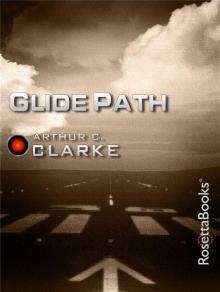 Glide Path
Glide Path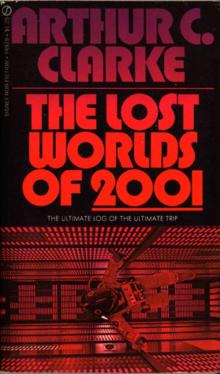 The Lost Worlds of 2001
The Lost Worlds of 2001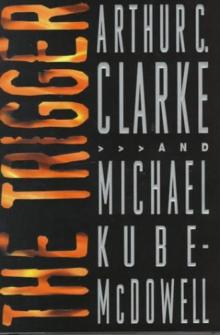 The Trigger
The Trigger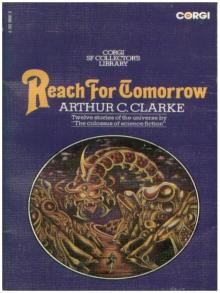 Reach for Tomorrow
Reach for Tomorrow Islands in the Sky
Islands in the Sky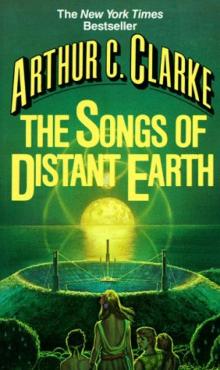 The Songs of Distant Earth
The Songs of Distant Earth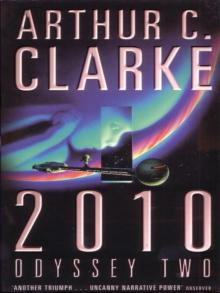 2010: Odyssey Two
2010: Odyssey Two Childhood's End
Childhood's End 3001: The Final Odyssey
3001: The Final Odyssey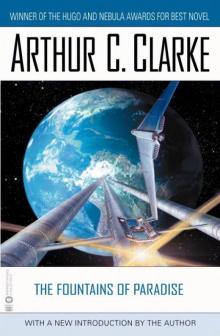 The Fountains of Paradise
The Fountains of Paradise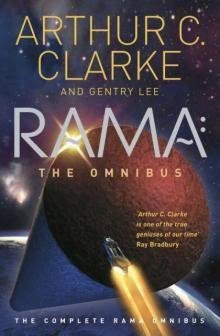 Rama: The Omnibus
Rama: The Omnibus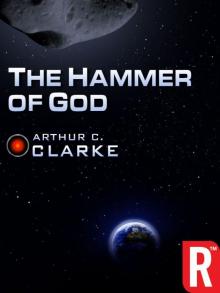 The Hammer of God
The Hammer of God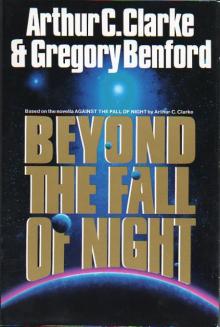 Beyond the Fall of Night
Beyond the Fall of Night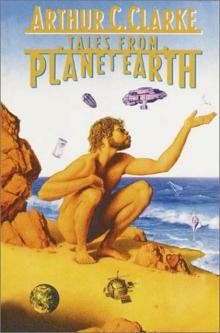 Tales From Planet Earth
Tales From Planet Earth 2061: Odyssey Three
2061: Odyssey Three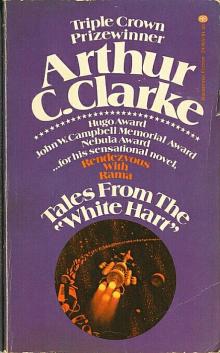 Tales From the White Hart
Tales From the White Hart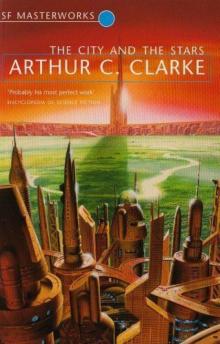 The City and the Stars/The Sands of Mars
The City and the Stars/The Sands of Mars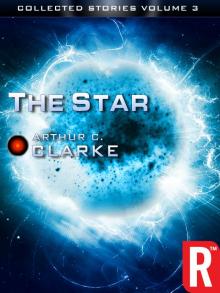 The Star
The Star Imperial Earth
Imperial Earth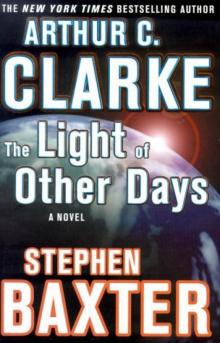 The Light of Other Days
The Light of Other Days Firstborn
Firstborn The Other Side of the Sky
The Other Side of the Sky Cradle
Cradle The Wind From the Sun
The Wind From the Sun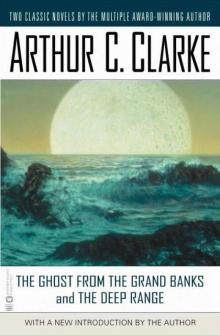 The Ghost From the Grand Banks and the Deep Range
The Ghost From the Grand Banks and the Deep Range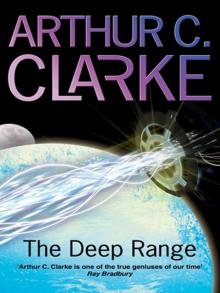 The Deep Range
The Deep Range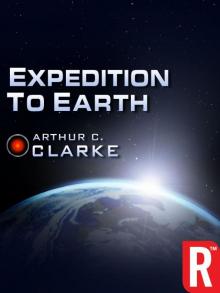 Expedition to Earth
Expedition to Earth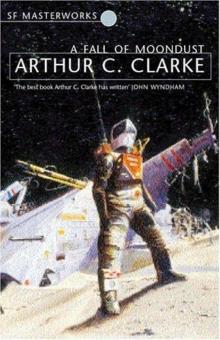 A Fall of Moondust
A Fall of Moondust Dolphin Island (Arthur C. Clarke Collection)
Dolphin Island (Arthur C. Clarke Collection) Richter 10
Richter 10 The City and the Stars
The City and the Stars Tales of Ten Worlds
Tales of Ten Worlds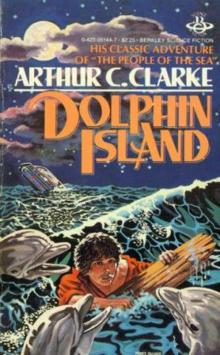 Dolphin Island
Dolphin Island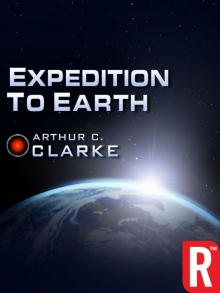 Expedition to Earth (Arthur C. Clarke Collection: Short Stories)
Expedition to Earth (Arthur C. Clarke Collection: Short Stories) Sunstorm
Sunstorm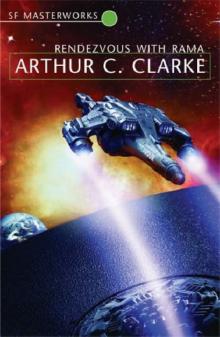 Rendezvous with Rama
Rendezvous with Rama The Collected Stories of Arthur C. Clarke
The Collected Stories of Arthur C. Clarke Trouble with the Natives
Trouble with the Natives Rama Revealed r-4
Rama Revealed r-4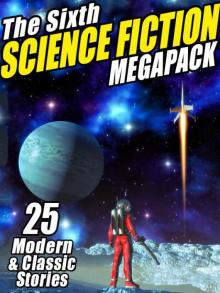 The Sixth Science Fiction Megapack
The Sixth Science Fiction Megapack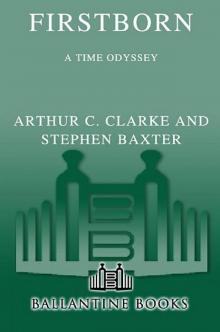 Firstborn to-3
Firstborn to-3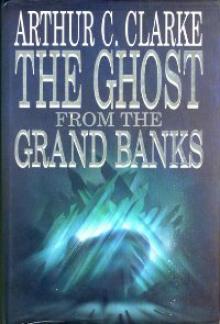 The Ghost from the Grand Banks
The Ghost from the Grand Banks Into the Comet
Into the Comet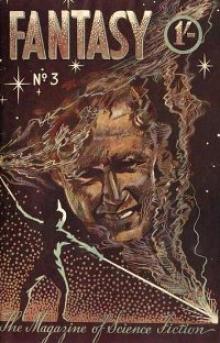 The Fires Within
The Fires Within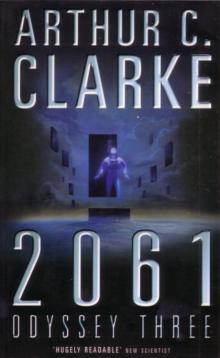 2061: Odyssey 3
2061: Odyssey 3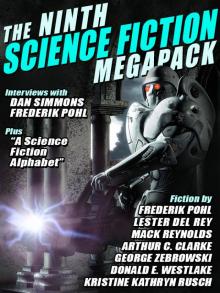 The Ninth Science Fiction Megapack
The Ninth Science Fiction Megapack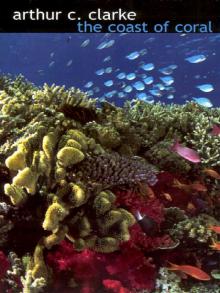 The Coast of Coral
The Coast of Coral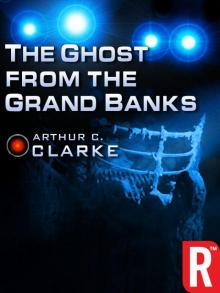 The Ghost from the Grand Banks (Arthur C. Clarke Collection)
The Ghost from the Grand Banks (Arthur C. Clarke Collection)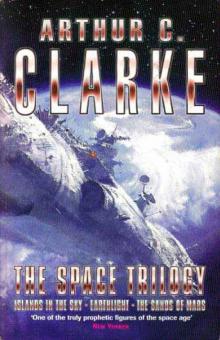 The Space Trilogy
The Space Trilogy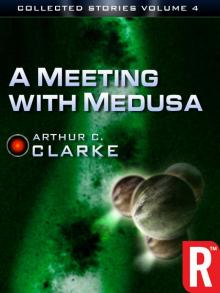 A Meeting With Medusa
A Meeting With Medusa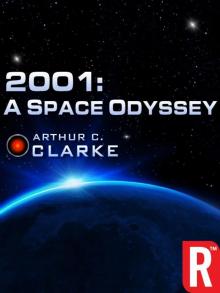 2001: A Space Odyssey (Arthur C. Clarke Collection: The Odyssey)
2001: A Space Odyssey (Arthur C. Clarke Collection: The Odyssey) Islands in the Sky (Arthur C. Clarke Collection)
Islands in the Sky (Arthur C. Clarke Collection)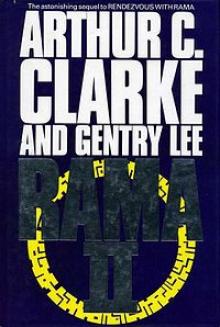 Rama II r-2
Rama II r-2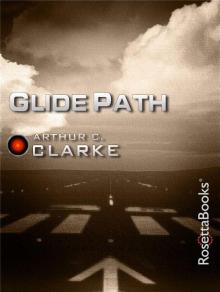 Glide Path (Arthur C. Clarke Collection)
Glide Path (Arthur C. Clarke Collection)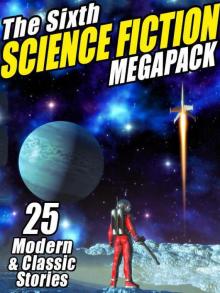 The Sixth Science Fiction Megapack: 25 Classic and Modern Science Fiction Stories
The Sixth Science Fiction Megapack: 25 Classic and Modern Science Fiction Stories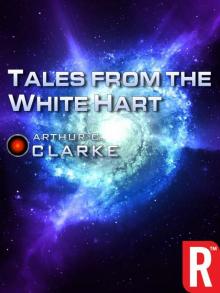 Tales from the White Hart (Arthur C. Clarke Collection: Short Stories)
Tales from the White Hart (Arthur C. Clarke Collection: Short Stories) The Reluctant Orchid
The Reluctant Orchid